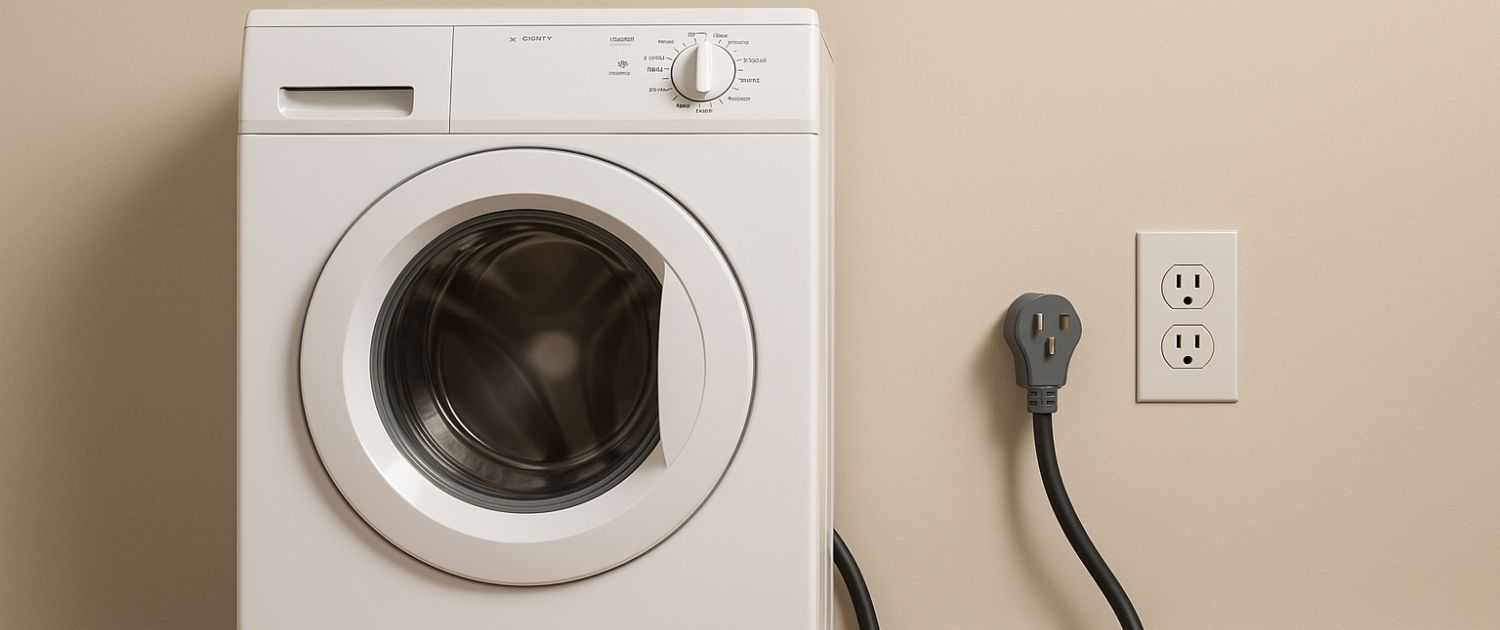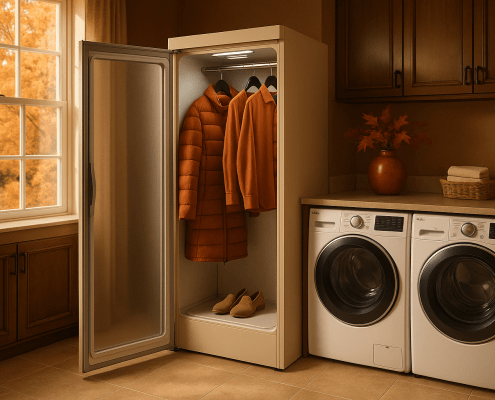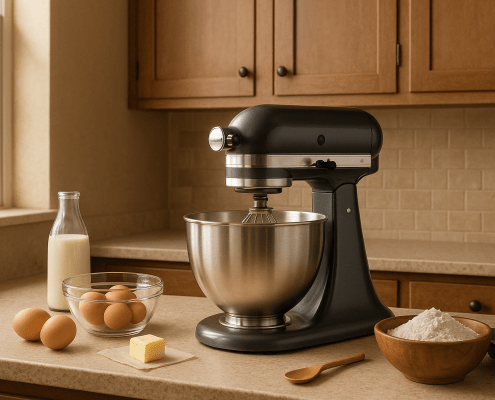Electrical Requirements for Major Home Appliances
Steven E / Wednesday May 7, 2025
Getting a new big appliance can be exciting, but there’s a catch: these appliances need the right kind of power to work. Before you plug in your shiny new appliance and expect it to run without a hitch, you need to get a handle on the electrical setup it requires. This means knowing the right outlets, the kind of power cords to use, and how much voltage these appliances will pull from your home’s electrical system.
We’ll break down the electrical basics you need to consider for your large household appliances. Whether you’re setting up a new appliance or thinking about updating your electrical system for a modern upgrade, we’ve got you covered with straightforward advice to keep everything running smoothly and safely.
If you need any replacement parts for your appliance, you can enter your model number at AppliancePartsPros.com to order them. Most orders arrive in just two business days, and we have thousands of free guides to show you how to install your new parts.
The information in this article may not apply to your specific appliance model. We recommend consulting your manufacturer’s documentation or contact us with any questions.
Voltage and amperage basics
Voltage is the kick that gets electric current moving. It’s measured in volts (V), and depending on where you are, the standard is different. For example, in the US and Canada, houses usually run on 120 volts. But over in most European countries, they’re set up for 230 volts. Knowing your area’s standard is key because gadgets and appliances are built to handle certain voltages. If you plug in something that’s not suited for your home’s voltage, you could be in for some trouble. It might not work right, could get damaged, or even become a safety hazard.
Amperage is the flow of electric charge, or how much electricity is running through a circuit. This is measured in amperes (A), and every device has its own needs in terms of how much current it needs to work. It’s important to know the amperage your large appliances need so you don’t overload your home’s circuits. Every circuit can handle only so much before it gets overwhelmed and shuts down, which is what happens when you trip a breaker. This is not just annoying; it could actually harm your electrical system. The big power-hungry appliances like air conditioners or dryers need to be spread out over different circuits. This way, you don’t put too much stress on any one circuit and keep the electricity flowing smoothly through your house.
Types of electrical connections
Outlets
Standard 120-volt outlets
- These are the most common types of electrical outlets found in homes and are suitable for a wide range of devices, including small to medium appliances, lamps, and chargers.
- However, they are not adequate for larger appliances that require more power.
- They usually have two slots and a grounding hole, accommodating three-prong plugs.
- They may come equipped with ground fault circuit interrupters (GFCIs), especially in areas prone to moisture like bathrooms and kitchens, to protect against electrical shock.
240-volt outlets
- Larger appliances, such as electric stoves, dryers, and some air conditioners, require 240-volt outlets.
- These outlets are specifically designed for high-powered appliances and have a different configuration than 120-volt outlets, making it impossible to plug a lower voltage appliance into them by mistake.
- They are characterized by three or four slots and are designed to accommodate plugs with two hot wires (instead of one hot wire like in 120-volt outlets), a neutral wire, and a ground wire (in four-slot configurations).
Power cords and plugs
Three-prong plugs
- Most large household appliances use three-prong plugs, which include two power prongs and a ground prong for safety. This design helps to prevent electrical shocks.
Four-prong plugs
- Newer installations and some appliances, particularly dryers and ranges, might use four-prong plugs, especially in homes with updated electrical systems.
- These include two hot wires, a neutral wire, and a separate ground wire, offering an additional safety layer by providing a dedicated path for electrical faults to ground without passing through the neutral wire.
Dryer and stove outlet adapters
Using an outlet adapter for appliances like stoves or dryers is generally unsafe and not recommended. These appliances require a lot of power to function properly and safely, much more than what smaller, less power-intensive devices need. Here’s why plugging your stove or dryer into an outlet adapter instead of directly into the appropriate outlet can lead to problems:
Electrical requirements and safety concerns
- High power needs: Stoves and dryers are designed for dedicated circuits with specific voltage (usually 220-240 volts) and amperage ratings. Most adapters aren’t made to handle such high demands consistently.
- Proper outlet matching: These appliances often use specialized outlets that can safely manage the electricity they draw. A regular adapter might not fit securely, leading to a poor connection that can overheat.
- Fire hazards: Overheating due to a bad connection can quickly escalate into a fire risk. In addition, adapters might not be designed to dissipate heat effectively, further increasing this risk.
- Damage to appliances: An incorrect power supply can harm the internal components of your stove or dryer, potentially leading to expensive repairs or the need for premature replacement.
- Electrical safety risks: Using an adapter might lead to an unstable setup where the plug doesn’t fit snugly into the outlet, creating sparks, exposing wires, and increasing the risk of electric shock or electrocution.
If your home doesn’t have the right type of outlet for your stove or dryer, the best course of action is to hire an electrician to install an outlet that meets the electrical needs of your appliance. This not only ensures that your appliance runs efficiently but also keeps your home safe and compliant with all relevant codes and regulations. The convenience of using an outlet adapter for a stove or dryer is far outweighed by the safety risks and potential costs. It’s important to make sure that big appliances have the power setup they need to operate safely.
Appliance electrical requirements
Refrigerators and freezers: Refrigerators and freezers typically have 120 volt standard requirements. However, it is important to ensure they are connected to dedicated circuits to prevent overloading and potential damage. Additionally, some models may require Ground Fault Circuit Interrupter (GFCI) protection for enhanced safety.
Washing machines and dryers: Washing machines and dryers can operate on either gas or electricity. Electric models generally require a 240-volt circuit and specific dryer outlets, while gas models may only need a standard 120 volt electrical connection for controls and accessories.
Dishwashers: Dishwashers typically have standard 120 volt requirements. However, built-in dishwashers may require a dedicated circuit to ensure sufficient power supply.
Ovens and ranges: Ovens and ranges can be powered by gas or electricity. Gas models generally require a standard electrical connection for controls, ignition, and accessories. Electric models may require either a 120-volt or 240-volt circuit, depending on their power requirements. It is important to check the appliance’s specifications for the correct electrical supply.
Air conditioners: Air conditioning systems vary in cooling capacity, measured in British Thermal Units (BTUs). Window air conditioners typically operate on standard voltage and amperage and can be plugged into regular outlets. Central air conditioning systems, on the other hand, require higher voltage and amperage and may need dedicated circuits to handle the increased power demands.
Water heaters: Water heaters can be electric or gas-powered. Electric water heaters typically require a dedicated circuit with a specific voltage and amperage rating. Gas water heaters require a standard electrical connection for controls and accessories.
Additional information
Thanks for reading! If you need replacement parts for any of your appliances, check out AppliancePartsPros.com, where you can enter your model number to find exactly what you’re looking for. Most orders arrive in two business days, and we have thousands of free resources to show you how to install your new parts.
You can also reach our award-winning customer service team at 1-877-477-7278, chat with a pro on our website and watch thousands of free video tutorials on our YouTube channel.
With nearly a decade of experience in providing top-notch customer service regarding appliance parts and repair, Steven enjoys sharing practical advice, troubleshooting tips, and interesting information to help readers stay informed.





